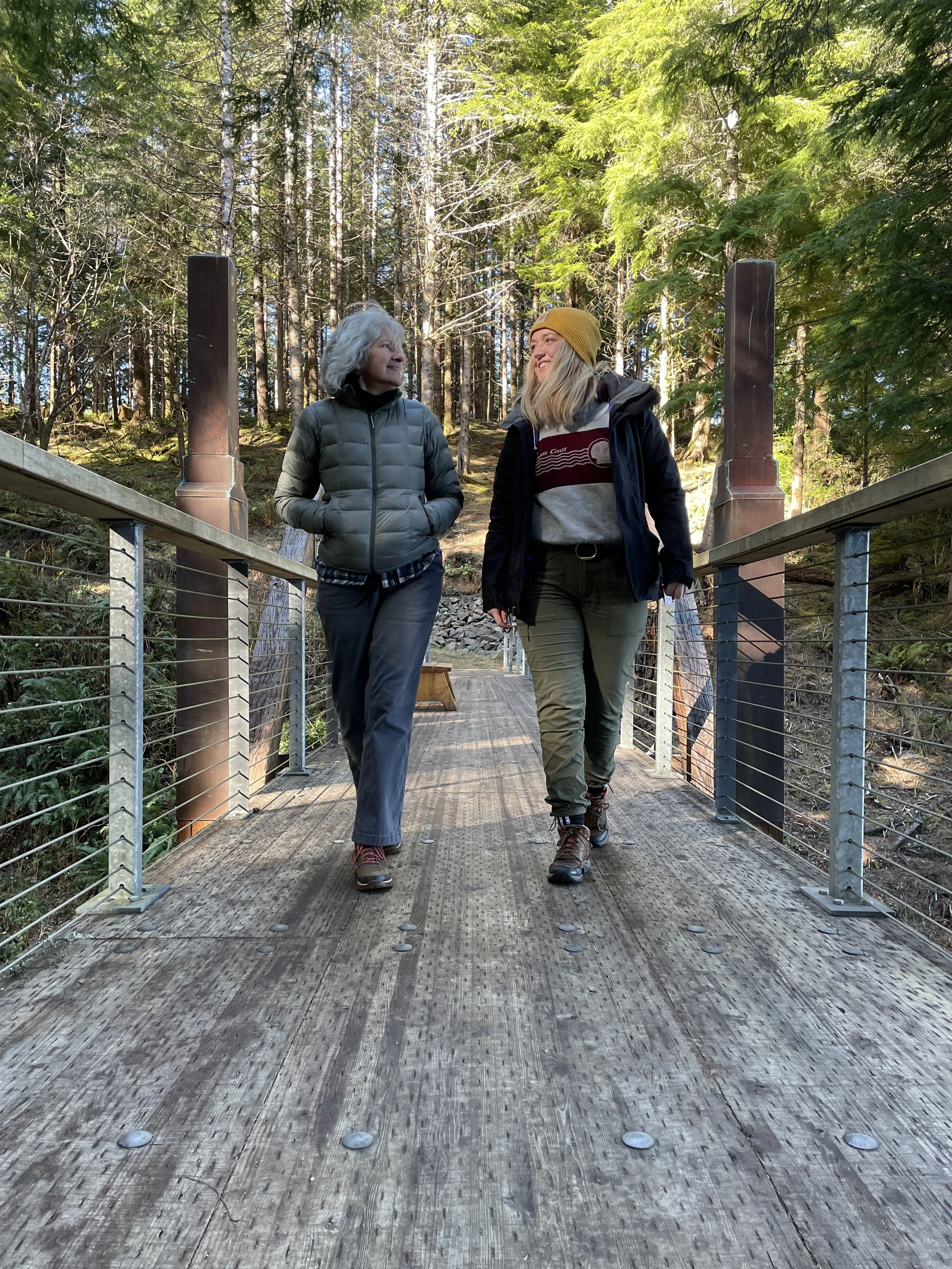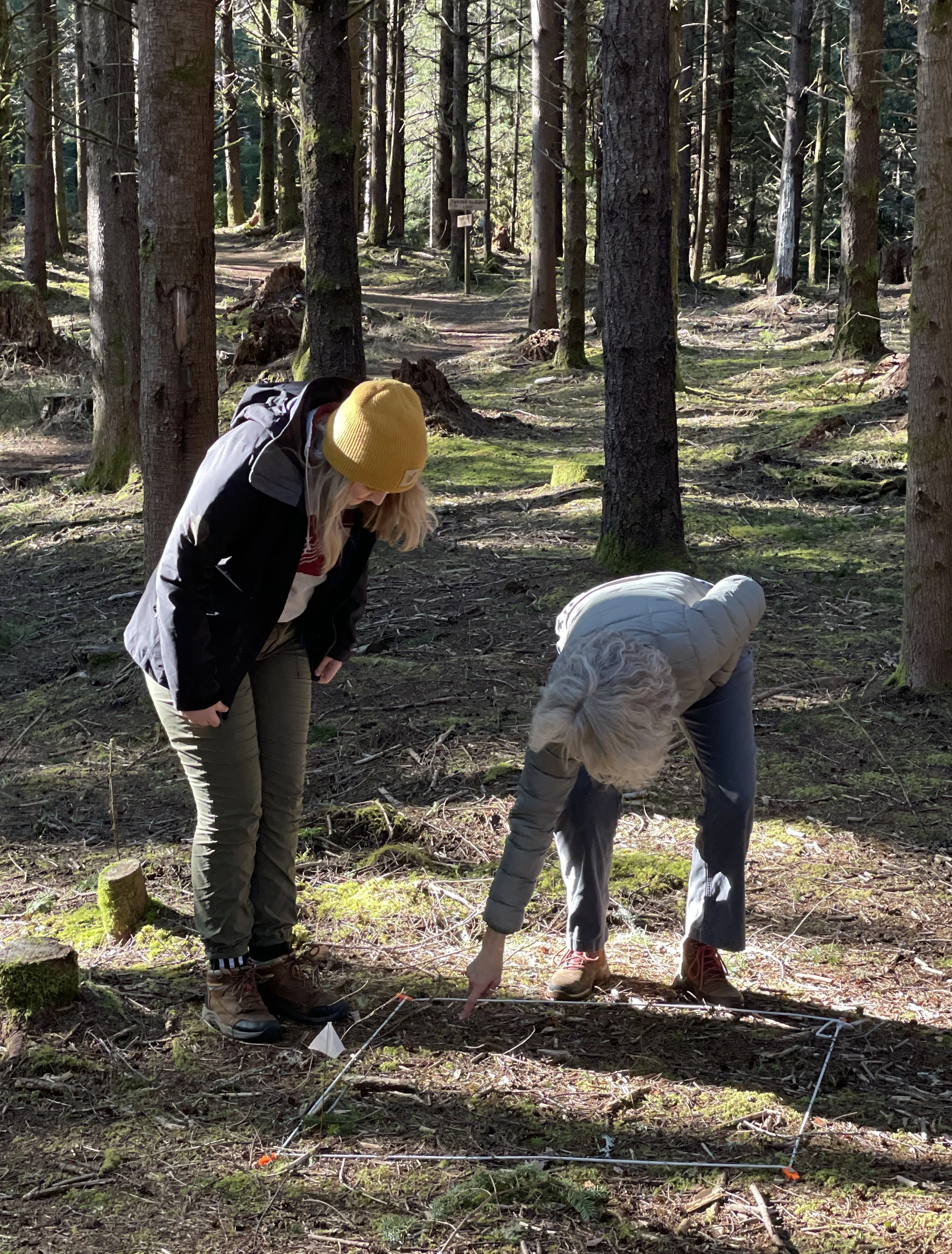A bridge to the future
Yakona Nature Preserve educates and inspires a new generation



Story & photos by Gretchen Ammerman
Oregon Coast TODAY
It began quietly, with a private property purchase of 77 mostly wooded acres on a peninsula across from Newport on Yaquina Bay. Over time, more property was added, currently standing at 340 acres, and the resulting area was named the Yakona Nature Preserve.
The name honors the Yaqo’n, who thrived in the area for thousands of years until being essentially wiped out by the westward expansion of European colonists. By 1892, only 19 Yaqo’n remained, marginalized by larger tribes, devastated by disease and fires and denied the land that had sustained them. Today, only one family remains who are known to trace their ancestry to the Yaqo'n people.
During World War II, spruce trees harvested on the peninsula were used to build airplanes and, thanks to a thriving shipping industry and rich oyster harvesting, the peninsula housed a population large enough that a school house was built there.
But by the mid-1930s, the oysters had been over harvested, shipping practices had changed and the peninsula, dubbed “West Yaquina” became a ghost town.
Bill and JoAnn Barton learned of the peninsula and its rich history in 2008. Their first purchase five years later included 47 acres that had been commercially harvested two years earlier.
“The reason the rest weren’t clear cut was there were nesting eagles,” said Dr. Natalie Schaefer, executive director of the preserve. “So lucky eagles and lucky us.”
Since 2013, the peninsula has seen substantial improvements, including removal of invasive species, the replanting of the clear cut with native species and construction of more than five miles of hiking trails and four bridges.
“This is the realization of the Bartons’ dream to preserve and restore native forest land on the bay, with access for students, families and people of all abilities.” Schaefer said.
Though I’ve known about the preserve since the first time it opened to the public, this was my first visit. As signs leading to the entrance clearly state, no dogs or bikes are allowed.
I parked at the entrance to the Wilder Trails, the access point to the preserve, and rode my bike to the property line, a roughly two-mile jaunt. After a short solo hike, I met up with Schaefer and Sarah Prue, who works at the Olalla Center in Toledo with the Walden Project, an outdoor therapy program.
“The whole purpose behind this project, besides preserving the forest, is education,” Schaefer said. “We have school groups, we have day camps, we are even soon going to have our own arts program.”
Test plots on the ground, wildlife cameras and “HOBOs,” a data-collecting chip that gathers information about weather patterns, are dotted throughout the property, all underlying the point that Yakona is as much an outdoor laboratory as a set of hiking trails.
Schaefer began as executive director roughly one year ago. Her background, including a master’s degree in Environmental Science and more than 20 years as a science teacher for grades K through 12, was a perfect fit for the vision of the preserve as an educational tool.
“When I get started the first thing I did was meet with the school district,” she said. “I’m working with the college now to hopefully develop a natural resource management certification program.”
Since January, the education piece will be managed by the non-profit Yakona Learning Center, and the management of the preserve and improvements will be through the Yakona Nature Preserve.
The preserve has recently seen increased exposure, with the debut of a specially commissioned piece performed by the Newport Symphony Orchestra, and an art show of photos taken by Bill Posner, whom I ran into on my visit.
“I’m lucky enough that they let me wander around here with my camera,” he said. “There is something about this place that inspires me and I just can’t take enough photos of it.”
Though the preserve is open to the public, Schaefer said people still need to remember that this is private property.
“The Bartons don’t mind if people walk in,” she said. “But the best way to visit is with escorted access. We had more than 400 people come through last year, so we have decided to do planned hikes that will be posted on the calendar on the website.”
Along with mature forest and a few old growth trees that are more then 200 years old, a few man-made items dot the landscape that add, rather than detract, from the natural experience/ These include a footbridge designed to emulate the Yaquina Bay Bridge and “Maryann’s Wind Telephone” booth. Inspired by a telephone that a Japanese farmer had in his garden to “metaphorically connect with his deceased cousin,” the booth is dedicated to Maryann Bozza, former project manager at the Hatfield Marine Science Center, who died 2017.
“This telephone is a monument to her extraordinary gift for connecting people,” the sign reads. “May it bring you comfort and carry your voice on the wind.”
For more information, go to yakonaoregon.org.
